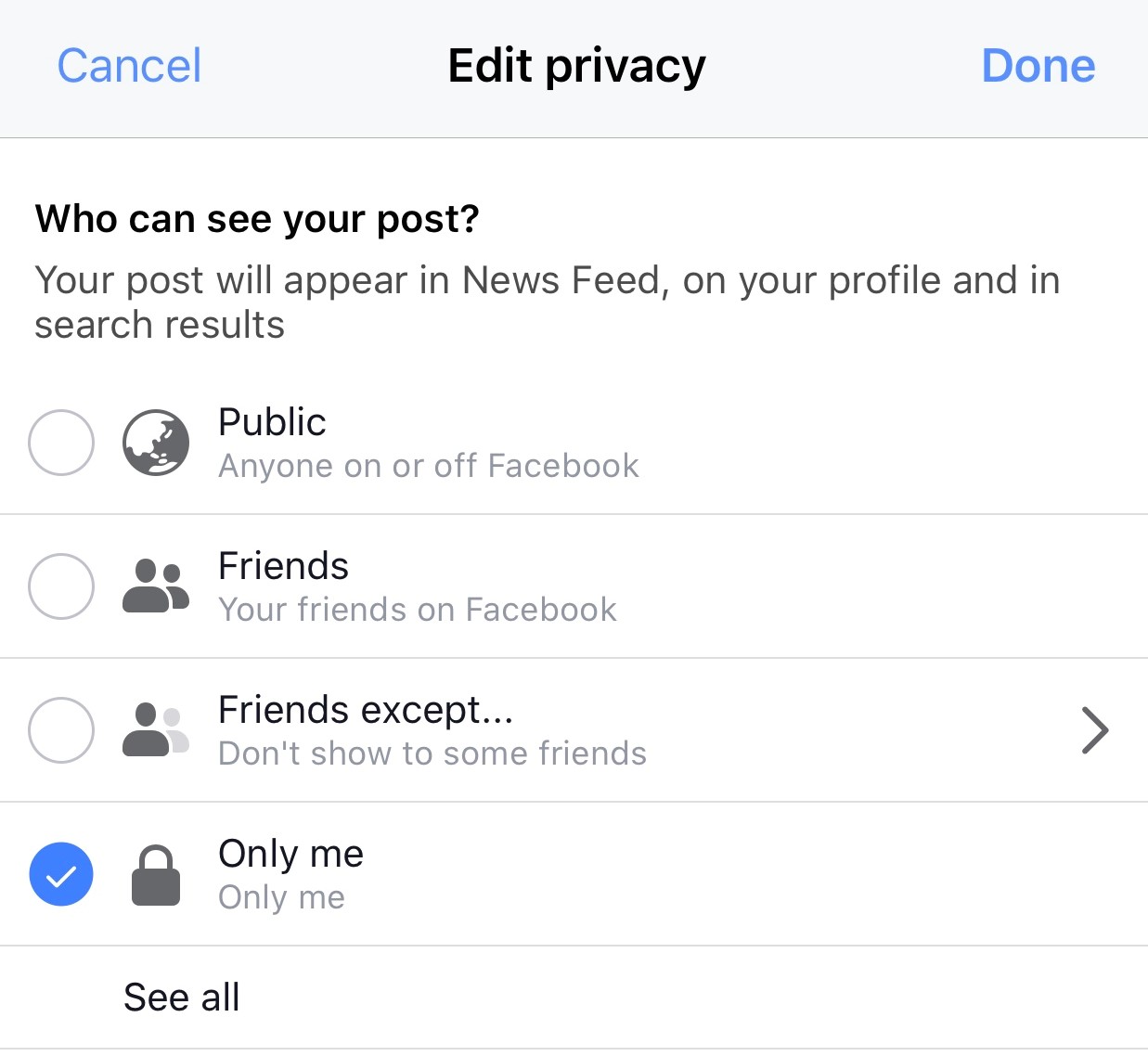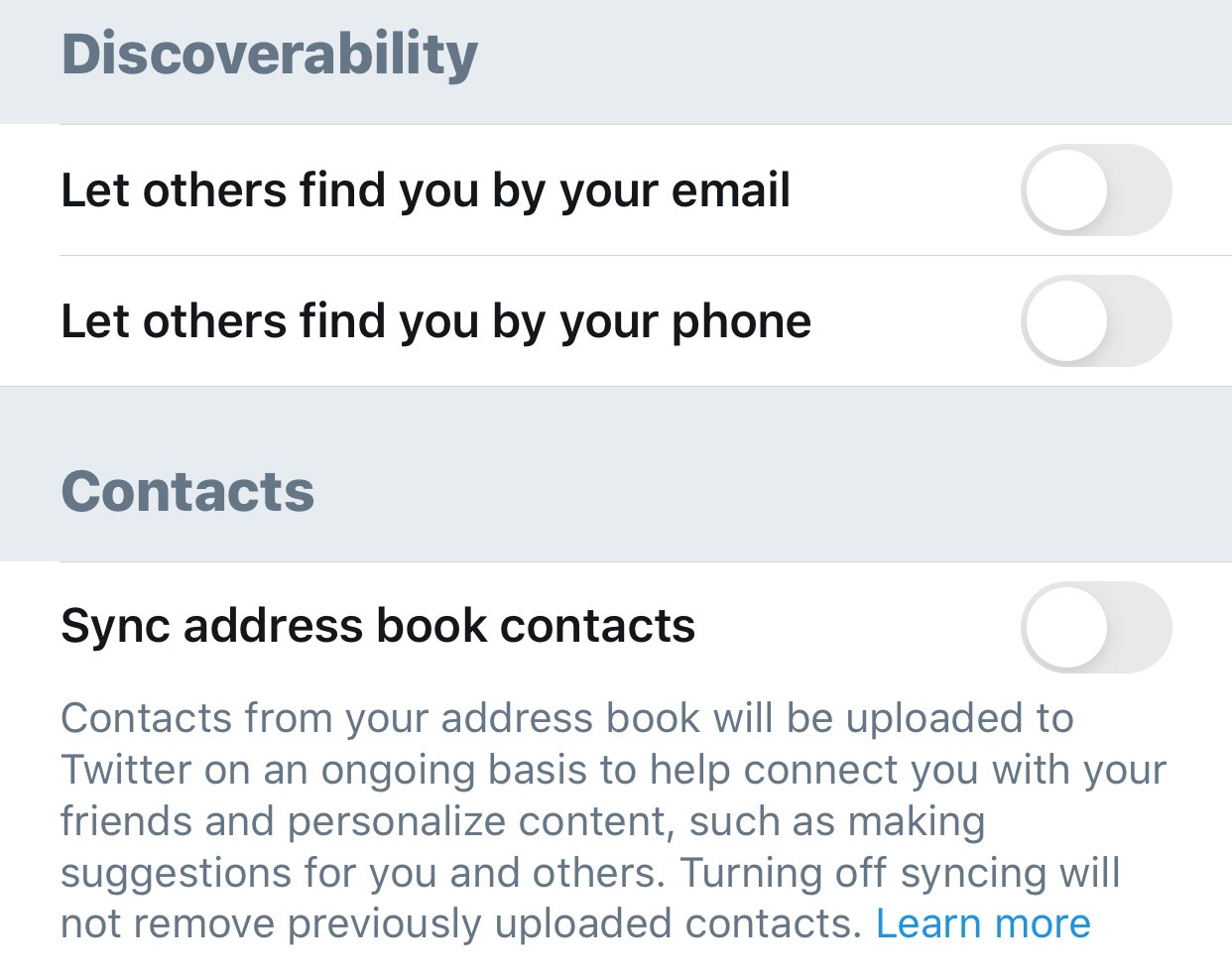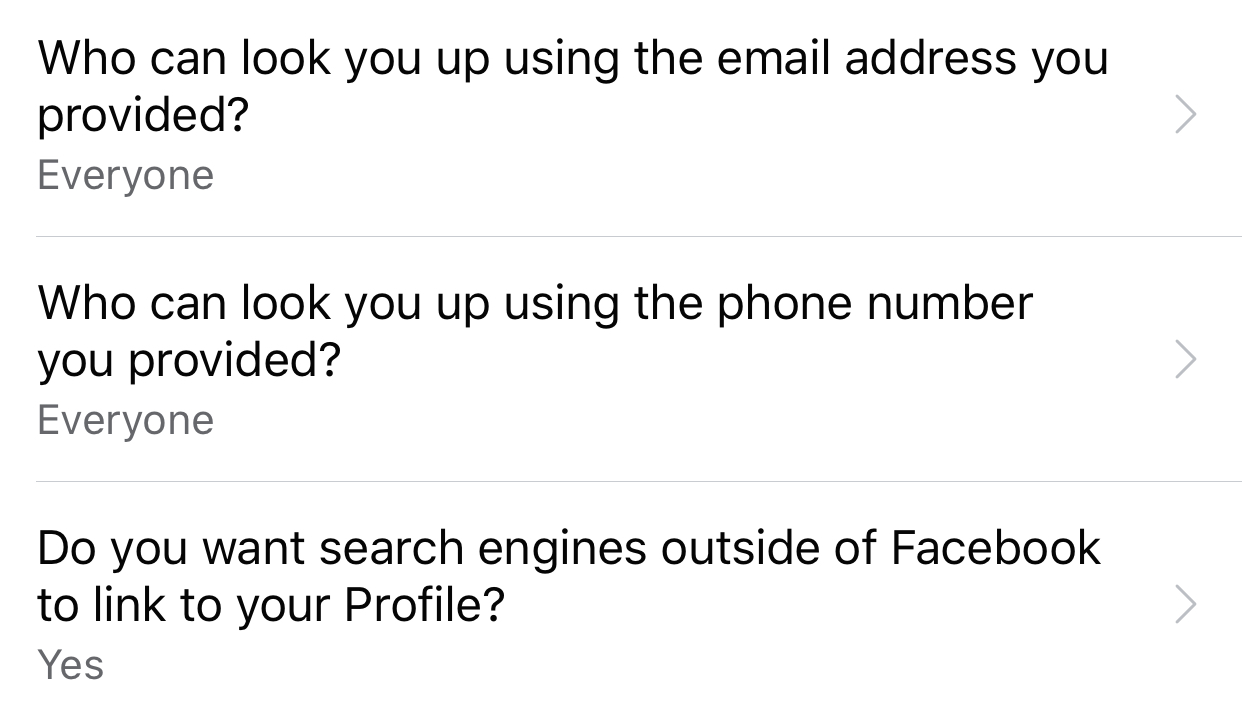P1.
Allow users to decide level of visibility.
Allow users to control the level of visibility of their personal information and activities.
Edit privacy for a post [Facebook], Account privacy [Instagram]


P2.
Consider the appropriate level of discoverability, depending on the service.
Give users options to control in what ways their the discoverability of their accounts and personal information.
Account discoverability [Twitter], Link outside search engine to profile [Facebook]


P3.
Provide controllability for friends and a blocking option against abuse.
Allow users to choose with whom to connect and disconnect, and provide options to choose whether to allow being tagged in friends’ postings. For accounts where abuse can occur, provide a “block” option.
Unfriend [Facebook], Friend request option [Facebook]


P4. Make users aware of the spreadability of their content, and allow them to control it.
Allow users to control the degree to which their content can be reproduced and disseminated without their consent or knowledge.
Allow resharing [Instagram]

P5. Help users use pseudonyms, if appropriate to the character of the service.
For functional services, it is recommended that users use their real identities. However, if a community is more interest-oriented or involves sensitive information about topics such as business layoffs, allow users to use pseudonyms rather than their real names.
Create username [Instagram]
